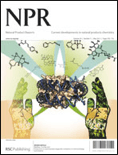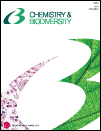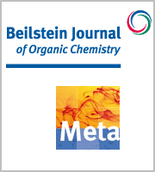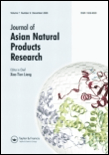
NATURAL PRODUCT REPORTS
Scope & Guideline
Illuminating Pathways in Biochemistry and Drug Discovery
Introduction
Aims and Scopes
- Discovery of Bioactive Natural Products:
The journal emphasizes the identification and characterization of bioactive compounds derived from various natural sources, including plants, fungi, and marine organisms. - Biosynthesis and Metabolic Engineering:
A core area of focus includes elucidating the biosynthetic pathways of natural products and engineering these pathways for enhanced production of valuable compounds. - Synthetic Methodologies:
The journal publishes advances in synthetic strategies, including total synthesis and semi-synthesis, aimed at producing complex natural products and their analogs. - Structure-Activity Relationship Studies:
Research on the relationship between chemical structure and biological activity is a recurring theme, aiding in the development of new therapeutic agents. - Integrative Approaches:
The integration of computational tools, genomics, and machine learning in the study of natural products is increasingly highlighted, reflecting the interdisciplinary nature of current research. - Environmental and Ecological Perspectives:
The journal also addresses the ecological roles of natural products and their interactions within ecosystems, emphasizing their importance in sustainability and biodiversity.
Trending and Emerging
- Artificial Intelligence and Big Data in Natural Product Research:
There is a growing emphasis on the application of AI and big data analytics in the discovery and characterization of natural products, streamlining research processes and enhancing data interpretation. - Sustainable and Green Chemistry Approaches:
Research focusing on sustainable methods for the extraction, synthesis, and production of natural products is increasingly prominent, aligning with global sustainability goals. - Interdisciplinary Research and Collaborative Approaches:
Emerging trends highlight interdisciplinary collaborations between chemists, biologists, and computational scientists to tackle complex challenges in natural product research. - Focus on Microbial Natural Products:
There is a noticeable increase in the exploration of microbial sources for natural products, particularly in light of their potential in drug discovery and biotechnology. - Therapeutic Applications of Natural Products:
Research investigating the therapeutic applications of natural products, particularly in the context of antimicrobial resistance and cancer treatment, is on the rise.
Declining or Waning
- Traditional Medicinal Uses of Natural Products:
Research specifically focused on the traditional medicinal applications of natural products is becoming less prevalent, with a shift towards more modern methodologies and applications in drug discovery. - Single Compound Studies:
There is a noticeable decrease in studies focusing solely on individual natural compounds without broader contextual analysis, as the field moves towards more comprehensive investigations involving complex mixtures. - Natural Products from Underexplored Regions:
Publications highlighting natural products sourced from less-studied geographical areas appear to be diminishing, possibly due to a growing emphasis on more readily accessible resources and well-characterized species. - Non-Bioactive Natural Products:
The exploration of natural products that do not exhibit significant biological activity is declining, as researchers focus on compounds with clear therapeutic potential.
Similar Journals

Natural Products and Bioprospecting
Innovating with Nature: Where Science Meets DiscoveryNatural Products and Bioprospecting is a prestigious academic journal published by SPRINGERNATURE, dedicated to advancing research in the fields of analytical chemistry, biochemistry, plant science, organic chemistry, and pharmacology. With an impact factor that positions it within the top quartiles across multiple categories, this journal serves as a crucial platform for disseminating groundbreaking findings and innovative methodologies focusing on the potential of natural products. Since adopting its Open Access model in 2011, it has broadened its reach, allowing global accessibility to cutting-edge research. The journal, based in Singapore, aims to foster interdisciplinary collaboration and encourages submissions that explore the intricate relationships between natural products and their applications in food science, toxicology, and pharmacology. Its well-respected status is further highlighted by impressive Scopus ranks and a growing H-index, reinforcing its significance in the scientific community. Researchers, professionals, and students alike can benefit from the rich repository of knowledge that Natural Products and Bioprospecting continuously curates and disseminates, making it an invaluable resource in the quest for innovative solutions derived from nature.

ARCHIVES OF PHARMACAL RESEARCH
Elevating the standards of pharmacological research since 1978.Archives of Pharmacal Research, published by the Pharmaceutical Society of Korea, is a leading journal in the fields of drug discovery, molecular medicine, and organic chemistry. With an illustrious history spanning from 1978 to 2024, this peer-reviewed journal has earned a remarkable reputation, achieving a Q1 category ranking in each of its primary research areas as of 2023. Ranked #9 in Organic Chemistry and #12 in Drug Discovery among their respective fields, Archives of Pharmacal Research showcases cutting-edge research that contributes significantly to scientific advancements. Although it is not an open-access journal, its impactful publications are crucial resources for researchers, professionals, and students navigating the complexities of pharmacological sciences. The journal's continued commitment to disseminating high-quality research underlines its importance in fostering innovation and expanding knowledge within the pharmaceutical landscape.

Natural Product Communications
Connecting Science and Nature for Innovative SolutionsNatural Product Communications is an esteemed open-access journal published by SAGE Publications Inc, dedicated to the exploration and dissemination of knowledge concerning natural products in diverse fields, including Complementary and Alternative Medicine, Drug Discovery, and Pharmacology. Since its inception in 2006 and continuing through its converged years until 2024, the journal has gained recognition with a robust focus on plant science and the medicinal properties of natural products. With a commendable impact factor reflected in its category quartiles (Q3 across key domains), Natural Product Communications serves as a vital resource for researchers and professionals who aim to further the understanding of the therapeutic potential of natural compounds. As an open-access journal since 2020, it ensures wide accessibility to its published research, thereby facilitating collaboration and innovation within the scientific community. This commitment to excellence makes Natural Product Communications a crucial platform for advancing research in the holistic and pharmacological sciences.

Marine Drugs
Pioneering Research on Ocean-Derived TherapeuticsMarine Drugs is a leading peer-reviewed journal dedicated to the field of drug discovery and development derived from marine resources. Published by MDPI in Switzerland since 2003, this open-access journal has established itself as a prominent platform for the dissemination of high-quality research, evidenced by its Q1 rankings in 2023 across multiple categories including Drug Discovery, Pharmaceutical Science, and Pharmacology, Toxicology, and Pharmaceutics. With a global readership, Marine Drugs specializes in the exploration of bioactive compounds from marine organisms, advancing our understanding of natural product chemistry and its applications in pharmacology and therapeutics. The journal actively encourages submissions from researchers worldwide, showcasing innovative studies, reviews, and methodologies that contribute to the growing field of marine biotechnology. Researchers, professionals, and students alike will find Marine Drugs an invaluable resource for enhancing their knowledge and fostering collaborations in marine drug research.

Records of Natural Products
Catalyzing Breakthroughs in Drug Discovery and BeyondRecords of Natural Products is a distinguished journal focused on the dynamic fields of Drug Discovery, Organic Chemistry, Pharmacology, and Plant Science. Published by ACG PUBLICATIONS in Turkey, this journal serves as a vital platform for disseminating innovative research findings and advancements in natural product studies. With its convergence spanning from 2009 to 2024, Records of Natural Products holds a commendable position in the academic realm, featuring a 2023 Q3 ranking in Drug Discovery and Organic Chemistry, alongside a notable Q2 ranking in Plant Science. Despite its current lack of open access, the journal is committed to providing quality content that enriches the understanding of natural products and their potential applications. Researchers and professionals alike can benefit from the journal's insights, which not only contribute to scientific knowledge but also facilitate advancements in pharmaceuticals and sustainable practices. By exploring the rich tapestry of natural product research, this journal underscores its importance as a leading resource for professionals dedicated to enhancing the efficacy and application of natural compounds.

CHEMISTRY & BIODIVERSITY
Connecting Molecules to Ecosystems.CHEMISTRY & BIODIVERSITY is a prominent peer-reviewed journal published by Wiley-V C H Verlag GmbH, serving as a vital resource in the intersecting fields of biochemistry, bioengineering, and miscellaneous chemistry. With an ISSN of 1612-1872 and an E-ISSN of 1612-1880, this journal has established itself over its converged years from 2004 to 2024 as a platform for innovative research that contributes significantly to the understanding of chemical processes in biological systems. The journal's impact is reflected in its category quartiles, particularly notable in Q2 in Chemistry and various Q3 and Q4 rankings across multiple related disciplines. While it is not an open-access publication, it continues to attract a diverse readership, including researchers, academics, and students, who are keen to explore the complexities of chemistry's role in biodiversity. Through high-quality articles and comprehensive reviews, CHEMISTRY & BIODIVERSITY plays an essential role in fostering advances in molecular biology and biochemistry, positioning itself as a key contributor to the ongoing discourse in the life sciences.

Beilstein Journal of Organic Chemistry
Elevating organic chemistry through collaboration and open access.The Beilstein Journal of Organic Chemistry, published by the renowned BEILSTEIN-INSTITUT, stands as a pivotal platform for advancing the field of organic chemistry since its inception in 2005. With its commitment to Open Access publishing, this journal enables global readership and collaboration, fostering the dissemination of high-quality research. Operating from Germany, the journal has carved out a significant reputation, currently holding a Q2 ranking in the Organic Chemistry category, with impressive Scopus rankings placing it at #91 out of 211 in the field, achieving a 57th percentile. The Beilstein Journal is dedicated to publishing cutting-edge findings that span the breadth of organic chemistry, including synthetic methodologies, catalysis, and material sciences, making it an essential resource for researchers, professionals, and students looking to stay at the forefront of organic chemistry advancements. With a vision to enhance collaboration and knowledge sharing within the scientific community, the journal plays a vital role in shaping the future of organic chemistry research.

EUROPEAN JOURNAL OF MEDICINAL CHEMISTRY
Exploring New Horizons in Bioactive Compound Design.European Journal of Medicinal Chemistry, a premier publication by Elsevier France-Editions Scientifiques Médicales Elsevier, has been at the forefront of advancing medicinal chemistry since its inception in 1974. With an impressive impact factor and ranking in the Q1 quartile across multiple categories including Drug Discovery, Medicine (miscellaneous), Organic Chemistry, and Pharmacology, this journal delivers cutting-edge research and reviews that are vital for researchers and professionals in the field. The journal’s scope encompasses the design, synthesis, and evaluation of biological activity of bioactive compounds, making it a critical resource for those looking to innovate in drug development and therapeutic strategies. Although currently not open access, subscribers can benefit from its diverse range of high-quality articles, ensuring the dissemination of knowledge in the ever-evolving landscape of medicinal chemistry. The European Journal of Medicinal Chemistry continues to play a pivotal role in shaping the future of pharmacological research and its application, thus appealing to an audience dedicated to making impactful scientific contributions.

SYNTHESIS-STUTTGART
Advancing the Frontiers of Organic Chemistry and Catalysis.SYNTHESIS-STUTTGART
Published by the esteemed Georg Thieme Verlag KG, SYNTHESIS-STUTTGART stands as a vital resource in the field of Chemistry, specifically focusing on Organic Chemistry and Catalysis. With an impressive publication history dating back to 1970 and continuing through 2024, it serves as a platform for innovative research and developments in synthetic methodologies and their applications. The journal holds a significant impact factor, reflecting its influence within the academic community, and is recognized in the Scopus rankings as a reputable source in its categories, with a rank of #99/211 in Organic Chemistry and #43/68 in Catalysis. Researchers, professionals, and students alike can benefit greatly from its content, which upholds rigorous peer-review standards and contributes to the global discourse in these critical scientific domains.

JOURNAL OF ASIAN NATURAL PRODUCTS RESEARCH
Exploring the Essence of Asian Natural InnovationsJOURNAL OF ASIAN NATURAL PRODUCTS RESEARCH is a prestigious publication in the field of natural products, focusing on valuable research spanning analytical chemistry, pharmacology, and complementary medicine. Published by Taylor & Francis Ltd in the United Kingdom, this journal has established itself as a key resource for academics and professionals seeking to explore advancements in drug discovery and organic chemistry. With a converged publication timeline from 1998 to 2024, the journal boasts several commendable category quartiles as of 2023, reflecting its robust standing in the research community: Q2 in Complementary and Alternative Medicine, Q3 in multiple domains including Analytical Chemistry and Organic Chemistry, and Q4 in Molecular Medicine. Although it currently does not offer open access, the journal remains a valuable compendium for empirical research and innovative studies in areas such as pharmacology and medicinal chemistry. Researchers, professionals, and students alike will find the JOURNAL OF ASIAN NATURAL PRODUCTS RESEARCH to be an essential platform for sharing groundbreaking findings and fostering collaborations that lead to significant advancements in science and health.